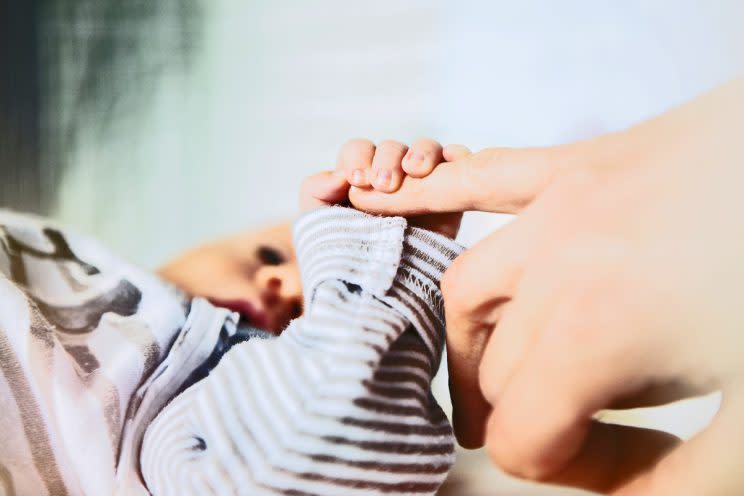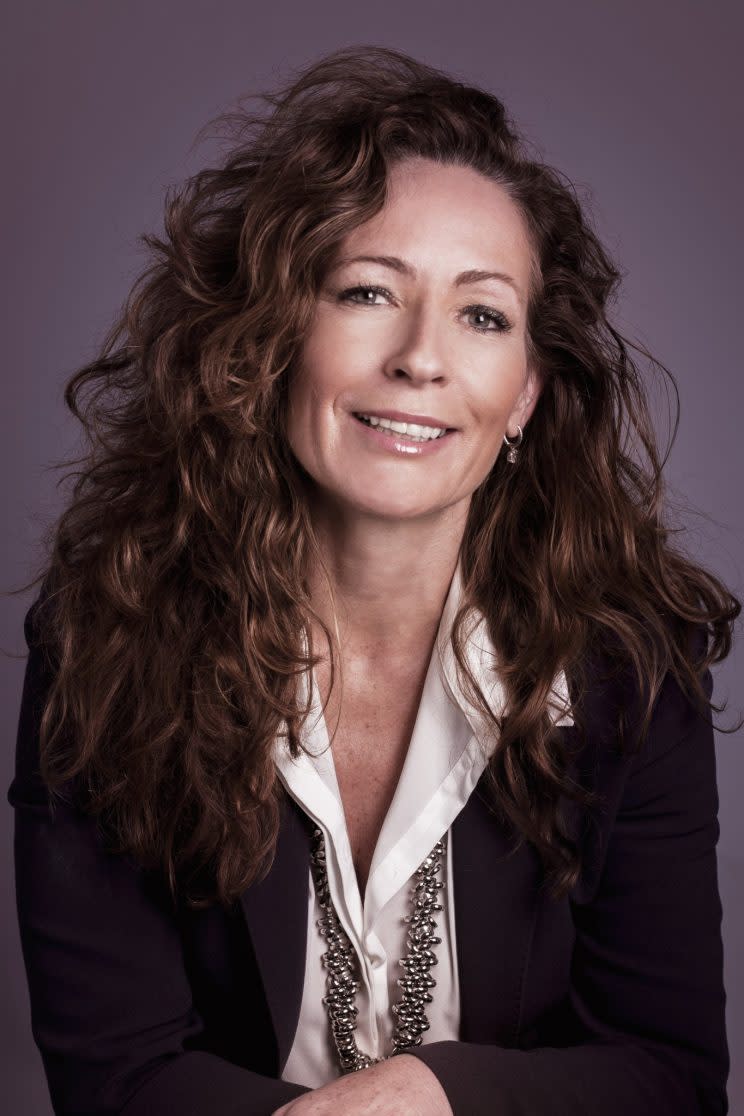Revolutionary Doctor Gives Hope to Young Girls With Fertility Issues

Sara Matthews, a London-based gynecologist and reproductive medicine specialist, bid a happy farewell to her patient Moaza Al Matrooshi, a new mom, on Jan. 10, but the 24-year-old isn’t just any patient.
Al Matrooshi made headlines in December 2016 for being the first woman to have had her ovary frozen before puberty and to have had a successful pregnancy 15 years later.
The new mom, whose ovary was frozen in the U.K. when she was 9 years old before undergoing chemotherapy for an inherited blood disorder, gave birth to a healthy baby boy on Dec. 13. Al Matrooshi, along with her son and husband, Ahmed, flew back to her home in Dubai less than a month later.
Matthews — one of the most highly regarded experts in fertility medicine in the U.K. — played a key part in the proceedings. She helped secure funding, made arrangements for Al Matrooshi’s frozen ovarian tissue to be moved to Denmark, and assisted a team of surgeons there who have performed such procedures in the past, as well as performed the IVF procedure.
“That Moaza placed her trust in me and took such a giant leap of faith is very exciting and introduces a wonderful new time for reproductive medicine,” Matthews tells Yahoo Beauty. “I saw her before she left for Dubai – she is happy and healthy. Her baby is happy and healthy. I never had any doubt that this would work; I always knew she would get pregnant.”
That’s a strong conviction to have, given that Al Matrooshi was born with beta thalassaemia, a blood disorder similar to sickle cell anemia that reduces the production of hemoglobin in the body and can prove fatal if left untreated.
One of Al Matrooshi’s brothers died from the condition. Another brother, who does not have beta thalassaemia, gave Al Matrooshi his bone marrow for a transplant, but she needed chemotherapy prior to receiving the transplant, and it damaged her left ovary.
“Though the chemotherapy cured her [of the beta thalassemia], and Moaza went through puberty getting ad hoc periods, when she came to me she was in perimenopause,” Matthews says.
Because of this, It had been a wise decision by Al Matrooshi’s mother to have her daughter’s right ovary removed and frozen pre-puberty (and pre-chemo), with the hope that one day Al Matrooshi would be able to get pregnant.
The procedure
The actual transplant of the ovarian tissue was quick and fairly simple. The Danish surgeons placed 5 fragments of tissue back into Al Matrooshi’s body, stitching 4 onto the damaged left ovary and one onto the side of her uterus. However, the subsequent IVF procedure was more complicated.
“When you go through menopause, your brain is producing [fluctuating] amounts of hormones, so I had to wait and see whether Moaza’s brain would recognize whether there was a working ovary in her body,” Matthews explains. “Remember, we were taking a child’s ovarian tissue, which had never had any hormones, and putting it into an adult environment, having no idea whether there would be any response.”

It took three months for her hormone levels to normalize, then Al Matrooshi began producing eggs naturally. But not knowing how long the ovarian tissue would last, Matthews decided to go ahead with IVF, collecting five eggs in total from Al Matrooshi. Three embryos were then produced, two were implanted earlier this year, and one took, resulting in the pregnancy.
“We have one embryo in the freezer and two more tissue fragments in Denmark that we can use at a later date if we have to, but the rest is history — Moaza got pregnant the first time with no complication at all and had a healthy little boy,” Matthews says.
She adds: “After she has breastfed for a year, I want to bring her back to the U.K. to see what’s happening hormonally, if she’s getting her period back, and just in case, I want to get more eggs in the bank.”
New hope for those with fertility issues
Al Matrooshi’s case is revolutionary and offers hope for younger girls diagnosed with serious conditions or illnesses that can affect fertility.
Many parents whose children have conditions like beta thalassaemia or who suffer from childhood cancers such as leukemia, know that chemotherapy helps, but “the first question they always ask is, ‘Will my children be able to have children?’” Matthews says.
“While older girls can freeze eggs and ovarian tissue, it’s always been more challenging for younger girls who have not yet gone through puberty,” Matthews notes. “We are trying to develop ways to hide the ovaries from the destructive effects of chemotherapy, but even then, there’s no way to know whether the eggs have been destroyed, so it’s amazing that we were able to use tissue from an ovary that had been removed in childhood.”
She adds: “Moaza gives us hope that we can possibly give more girls the chance of a normal life.”
Matthews, who has trained with some of the U.K.’s top ob-gyns and fertility specialists, is particularly interested in helping young women who face fertility challenges that many believe cannot be overcome.
One case she’s especially proud of is that of a young woman whose womb burst during her first pregnancy and who was told by doctors that she would never conceive again.
“I operated four times to reconstruct the womb, and not only did she get pregnant again naturally,” Matthews says, “but she also has been talking about baby No. 2.”
Related: Uterus Transplants May Soon Help Infertile Women Have Children
Related: 5 Myths About IVF You Need To Stop Believing
Related: Sofia Vergara Sued by Her Own Frozen Embryos in Bizarre Legal Battle
Let’s keep in touch! Follow Yahoo Beauty on Facebook, Twitter, Instagram, and Pinterest.
